As responsible travelers evolve, so do the stories we share.
This article is part of our living archive — trusted content we continue to care for.
First published on March 4, 2022 • Last updated on March 18, 2022.
While we have attended many cultural gatherings throughout Ecuador, the celebration of Mushuk Nina, or the Andean New Year, at the archeology site of Cochasquí has to be one of my absolute favorites. Locals welcomed us as if we were dear friends and greeted my camera with a joy that I have rarely seen.
What is Mushak Nina
The name Mushuk Nina means New Fire. In Andean cosmology, fire is one of the four important elements that also include air, earth, and water.
Local communities usually meet on a Sunday closest to the March Equinox, March 20th, to celebrate Mushuk Nina. The actual equinox is called Pawkar Raymi in the local native dialect, Quichua. Depending on the community, local celebrations can be called either Pawkar Raymi, Año Nuevo Andino, or Mushuk Nina or some combination of the three. Often, these celebrations are sometimes blended with Carnival festivals. However, communities with strong ties to pre-colonial Quichua traditions prefer to highlight Andean traditions rather than Catholic ones.
The Sacred Circle
We arrived at the outdoor museum expecting to pay an entrance fee. Instead, we were asked to give our names, handed tickets for use at a later time, led inside, and told to enjoy ourselves.
Upon entering the grounds, the first thing we notices was a huge circle laid out on the grassy expanse. Rose petals lined the perimeter and marked the shape of an Andean Cross in the center. Someone had laid a ready-to-light fire in the very center.
Groups of people waited on the what looked like a grassy hillside. Because we were familiar with Cochasquí, we knew that this knoll was the backside of one of the largest pyramids.
On the far side of the park, dance groups practiced away from the center of attention. We knew we had arrived with plenty of time to see the main events. Instead of waiting on the hillside, we took off with our cameras to wander among the practicing dancers. We spent an hour or two meeting new people and taking photos of beautiful women dressed in their best traditional costumes.
When we turned our focus back to the center circle, something had changed. Someone had lit the fire and a small group of people stood within the rose petal circle. Families were taking turns at a spiritual cleansing, using their hands to pull smoke from a small pot of burning incense and rose petals, much like washing faces with water.
The Dancing
After all the families had taken their turn at the ritual cleansing, the official program started. The slope of the pyramid served as seating and the grassy field became the stage. Performers from neighboring communities took turns dancing and playing Andean music. Each group wore traditional costumes, bright colors shining despite the gray day.
Each group of women wore clothing unique to their town or region. One striking group wore pleated black skirts trimmed in bright golds, oranges, and blues, striking white blouses embroidered at shoulder and neck in brilliant jewel tones, and hand woven colorful belts to tie the outfits together. Another group added colorful, hand embroidered shawls tied over one shoulder of their white cotton blouses. A third group wore thick, white woolen hats over long blue scarves that covered their hair.
Some groups included men playing musical instruments. Most wore traditional ponchos and chaps made of alpaca pelts. One group included Aya Huma, a figure meant to rid the festival of bad demons. His mask is double-faced so that the evil spirits think that he is always watching.
The Community Meal
While the dancing continued, the organizing committee served lunch. We learned that our tickets were literally free lunch tickets. And what a meal! We feasted on hornado (roast pork), boiled potatoes, mote (hominy), and tostado (toasted corn), all washed down with plenty of chicha de jora (fermented corn juice).
We learned that local community Raymi festivals often include free food. In fact, it is bad luck to send someone away hungry after such a celebration. If you can find the community leadership, it can be polite to offer a donation to help purchase next year’s celebration meal.
The Finale
After our meal, the dancers gave way to a local group from nearby Tabacundo. They came to share the process of making wool beginning with the sheering of a few alpacas. In an incredible feat, men laid alpacas on the ground and clipped their heavy coats with huge metal sheers. Several women spun wool into yarn right before our eyes.
By this point, the chicha had done its work. People were relaxed and happy, enjoying what was left of a now sunny afternoon. Although a few dance groups performed, the crowd was less attentive and family groups were enjoying spending time together.
We thought our day celebrating the Andean New Year was complete and headed back to our car. But as I was leaving, an older woman stopped me as I was walking by. She asked why I hadn’t taken her picture. So with one last photo of a bright smiling lady, I bid Cochasquí goodbye.
If you would like to share your own photos or story about a shared cultural experience in Ecuador, please contact us!

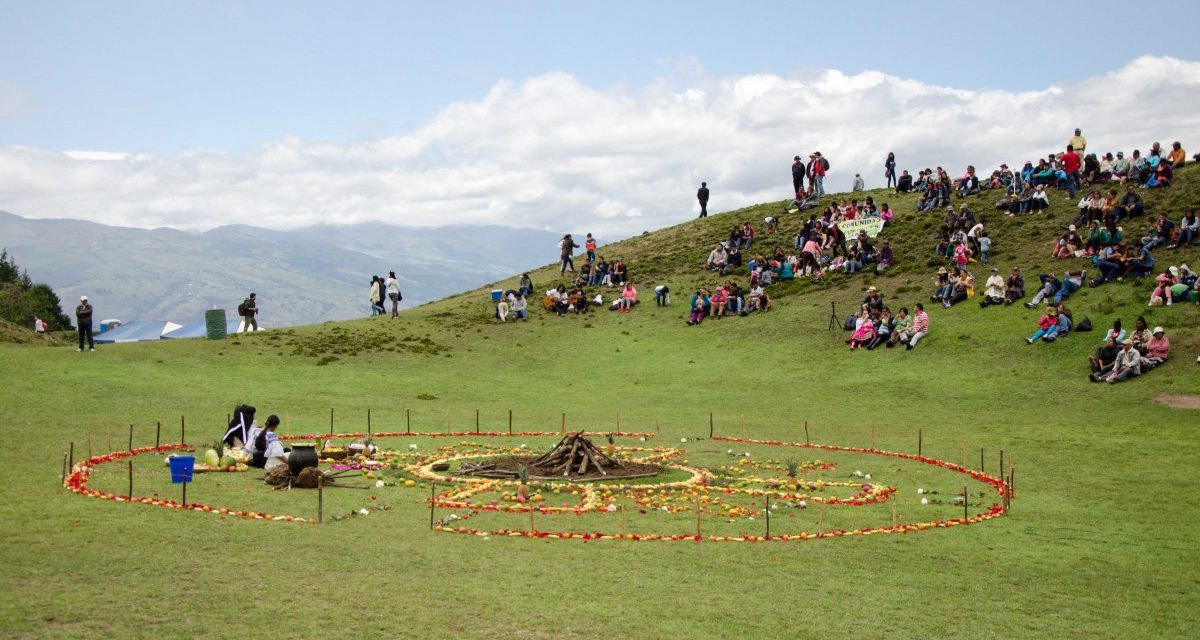

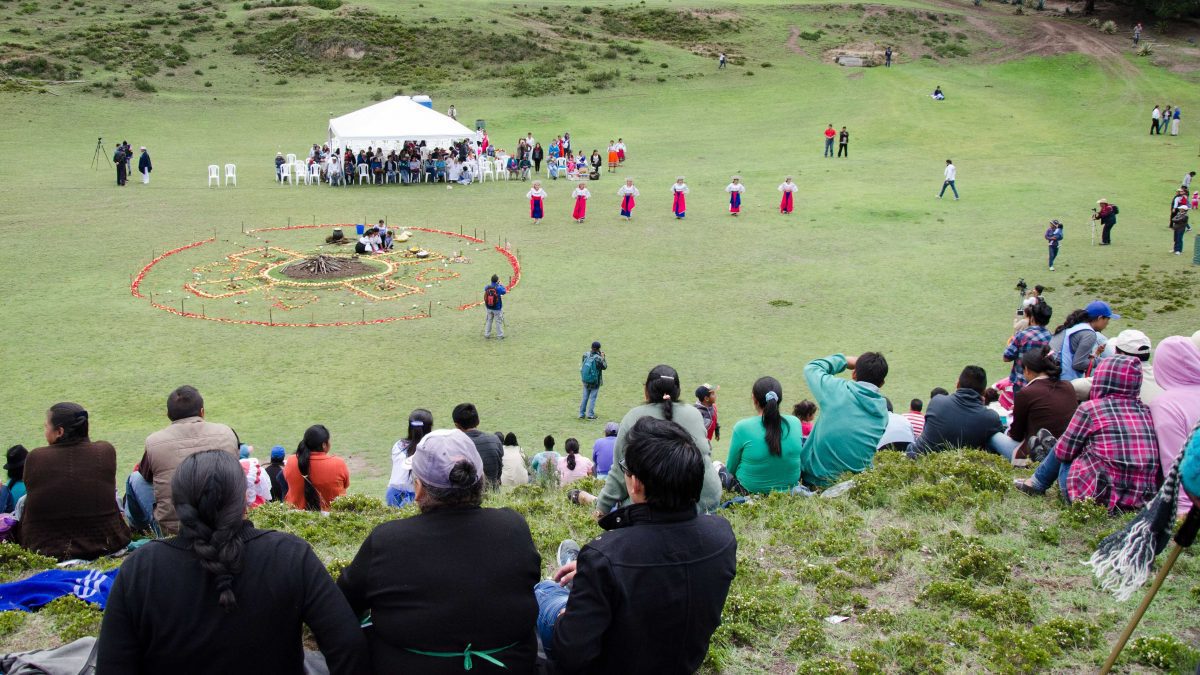

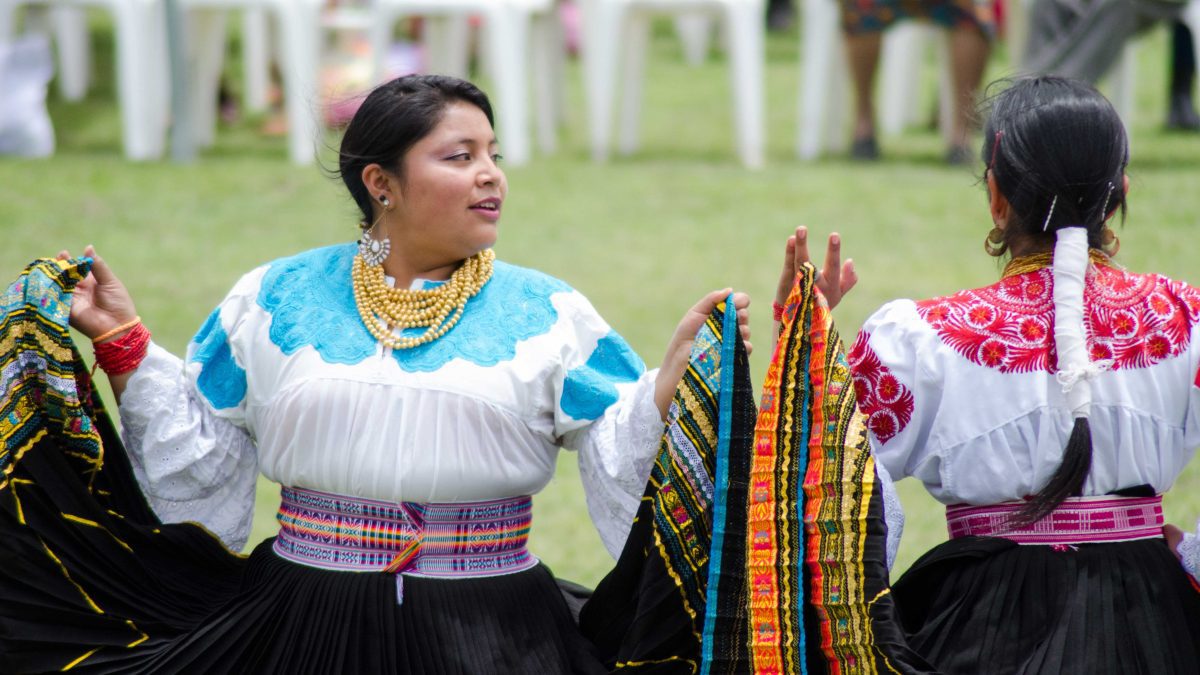



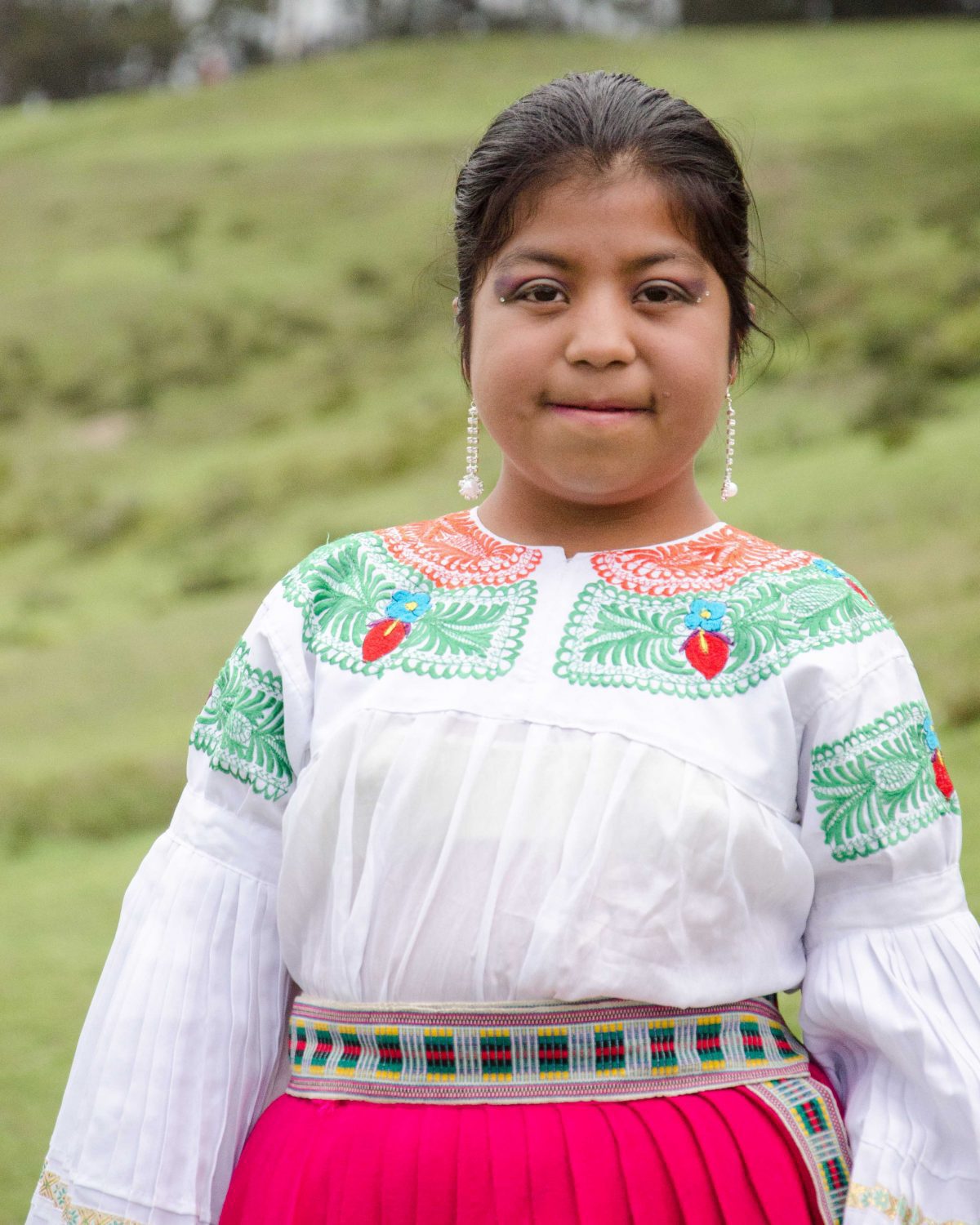
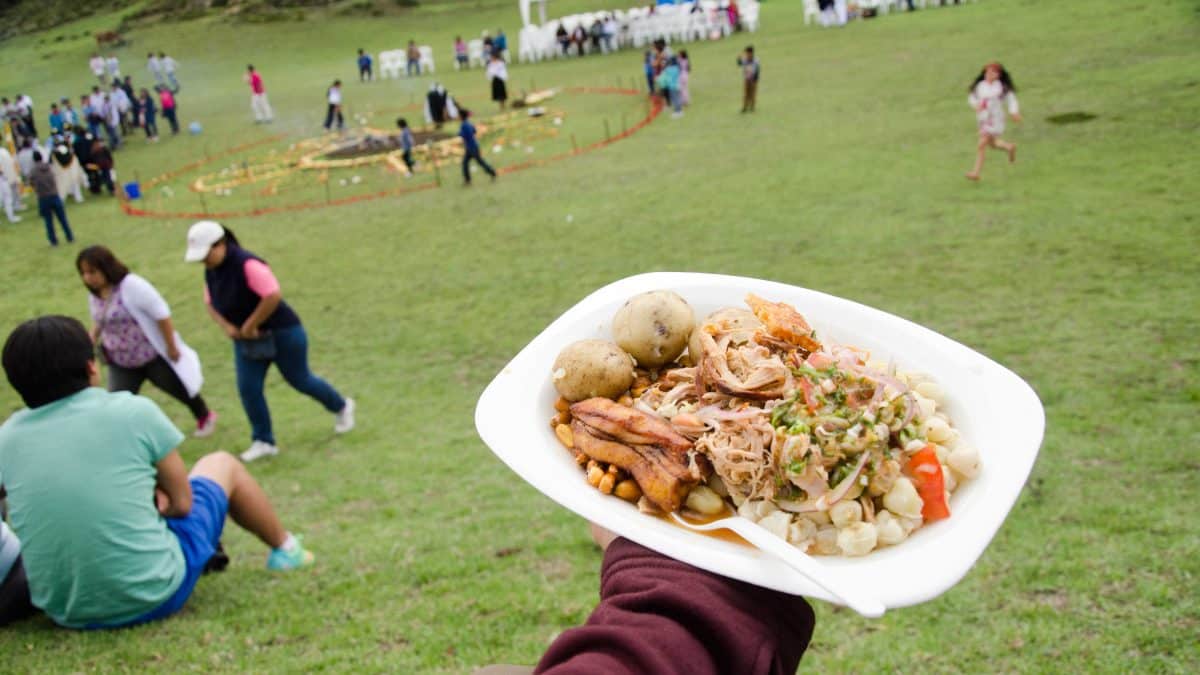
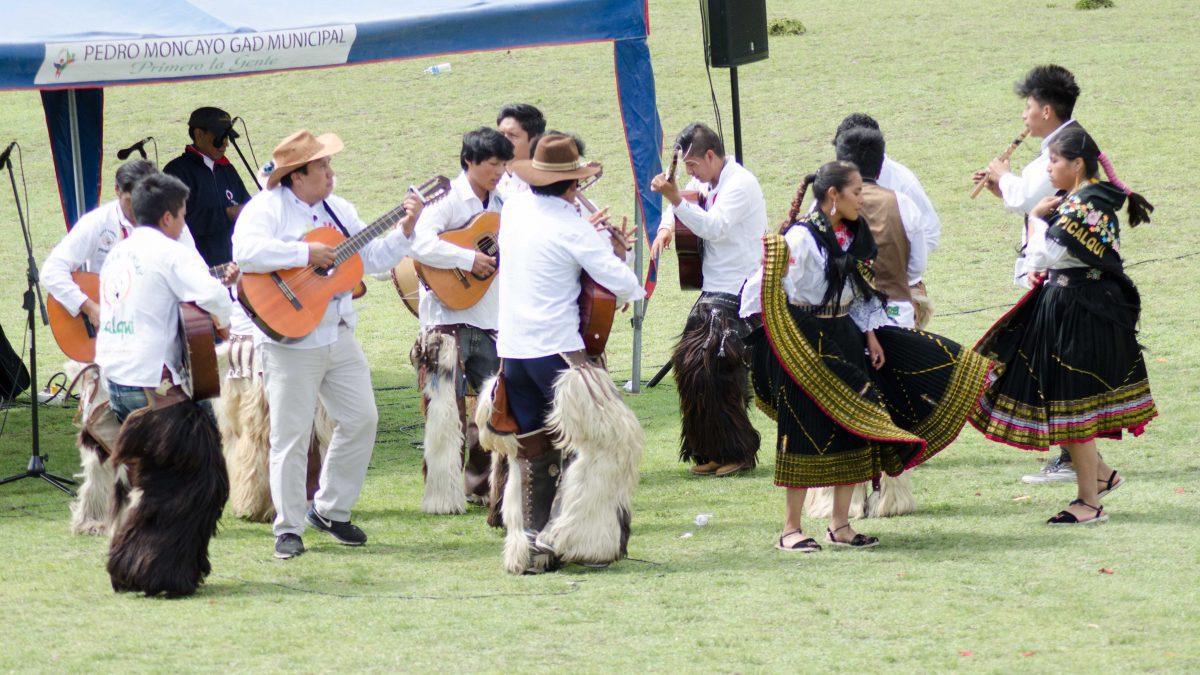
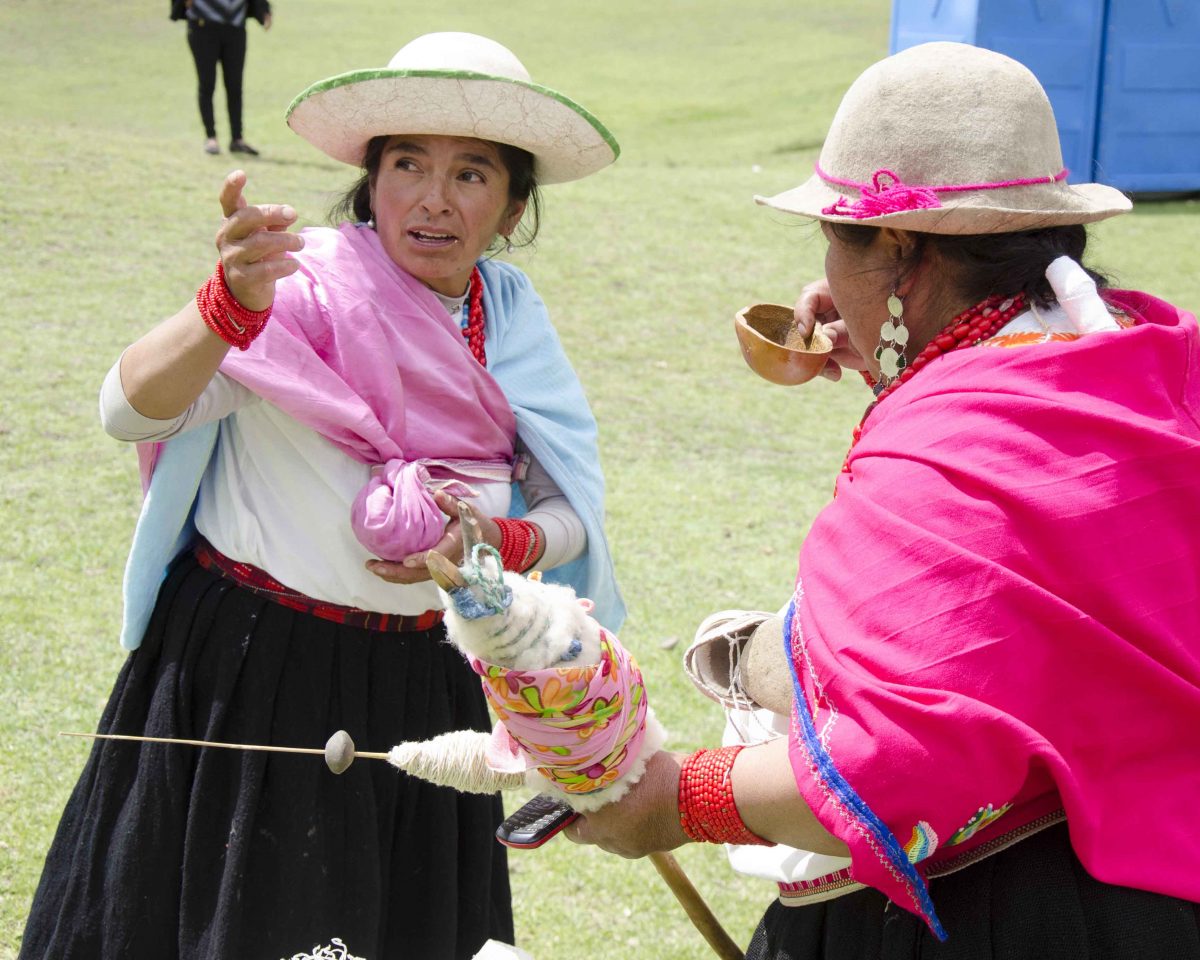

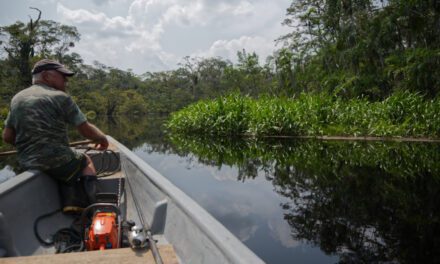

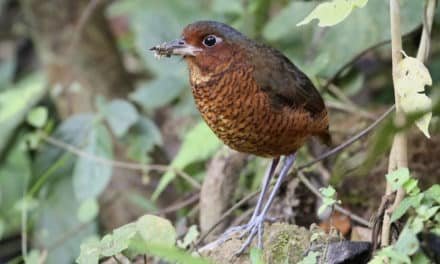


















This post about the Andean New Year celebration at Cochasquí is incredibly exciting and full of life! The vivid descriptions of the rituals, vibrant costumes, and warm community atmosphere make it feel like you’re right there experiencing it yourself!